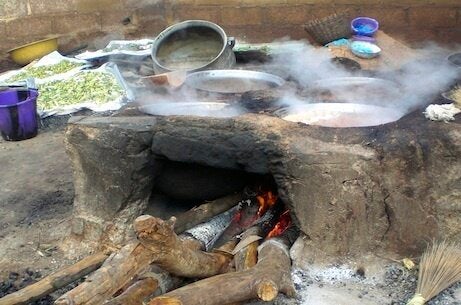
*Marlen de la Chaux (2013) is currently pursuing a PhD in Management Studies at the University of Cambridge.
Sometimes major international governance schemes begin simply: with a glass of beer, and questions of how to measure the making of it. Dolo, a slightly-alcoholic beverage, is made primarily in Burkina Faso by boiling sorghum malt and water. The boiling is the problem. The primary source of fuel across the country is firewood and in many areas more than half of the available supply goes into making dolo. To make more energy available for other uses, there are two obvious choices. Get more firewood or use less.
Unsurprisingly, the latter has become the mantra of a number of development actors. The largest is the United Nation's Global Alliance for Clean Cookstoves, launched in 2010. By 2020, the initiative aims to bring energy-efficient stoves to 100 million of the 2.7bn households that rely on firewood or charcoal for cooking. The solution seems simple; give people efficient stoves and they will use less firewood, thereby reducing the depletion of natural resources. In addition, the stoves mitigate the risks associated with cooking on open fires, which cause about four million deaths annually, making it a more potent killer than malaria or tuberculosis.
Last summer, I was sent to Burkina Faso to find out whether energy-efficient stoves delivered on their promise. I assisted the economic research institute RWI in their evaluation of the initiative Foyers Ameliorés de Burkina Faso (FAFASO). Sponsored by the German Society for International Cooperation (GIZ), FAFASO works with dolotières, masons, potters, and whitesmiths regarding the construction and dissemination of energy-efficient stoves in the country. As such, the project provides a platform for exchange to the people who have expertise and a stake in the production of dolo and encourages them to work together to develop and implement the new stoves.
My purpose in Burkina Faso was to answer one question: Are the dolotières who use the energy-efficient stoves using less firewood? What I found was an answer to that question - they use about 25 per cent less - and another, much larger question: What is the project's impact?
Lost narratives
While in Burkina, I spoke to over 200 dolotières. Looking at my notes after I left, I reread the stories they had told me about their businesses, lives, plans, hopes and much more: Florence, who became involved in her local dolotières association when she purchased the stove, or Marie who could not find a mason to repair the stove for her or Sandrine who complained that customers doubted the quality of the dolo she brewed on the new stoves. I wondered why their narratives did not seem to have a place in the impact evaluation.
Since one size rarely fits all and individual stories can overpower the common experience, evaluators often prefer to let numbers tell the story. But when evaluating a project that is based on information and experience sharing such as FAFASO, traditional impact evaluations may only be able to take us so far. FAFASO's impact may reach beyond the reduction of biomass usage, as the stories of Florence, Marie and Sandrine suggest. In offering channels for communication between groups, the project may have a profound effect on dolotières' emancipation, local supply chains or customer behaviour, to name just a few areas.
I therefore think it may be time to reconsider the gap between the impact that development initiatives can have and the impact that evaluations measure. One way to start may be by letting people targeted by development initiatives speak just as loudly as numbers and statistics.
